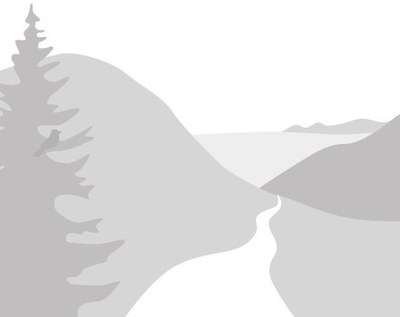
Trip Report
Basic Alpine Climb - Yellowjacket Tower/East Flank
A successful day in Leavenworth with a strong group of students and rope leads.
- Sun, Jul 8, 2018
- Basic Alpine Climb - Yellowjacket Tower/East Flank
- Yellowjacket Tower/East Flank
- Climbing
- Successful
-

- Road suitable for all vehicles
I have heard several basic trips up Yellowjacket take up to 12 hours, so hopefully these notes help cut future trip times down a bit. The 5 mile RT day is a lot more enjoyable when you complete it in under 9 hours.
Our team of 4 intense basic students and 3 rope leads departed the trailhead just after 8 AM. The new Yellowjacket sign that marks the path helps avoid becoming a nuisance to the people whose property we are on. We set off at a moderate pace, with the goal of taking a 5-10 minute break every hour. Initial routefinding was very straightforward, but once the trail peters out into the gully I have found the most success, and most stable rock, by staying to the right. Helmets should always be worn in the gully. Once you get above the chockstone, you can see the giant wall of chicken heads that marks the entrance to the gully. Find the path of least resistance to get to that. We had some students hug the right and go up a gully, which feels like low 5th class in a couple of spots, and some stay on the slab closer to the middle of the gully, which looked sketchier from the bottom but reportedly felt more secure.
We reached the hidden gully after about 2 hours of hiking and put on our harnesses. We decided to protect the hidden gully pitch with a fixed line. The other two times I have climbed this route, I have felt like the hidden gully was a little harder than the 4th class scramble it claims to be, and I thought the students would appreciate the extra protection of a handline. However, third time is the charm, and this time I indeed found a way up that made it feel very much like 4th class, not 5th class, moves. The trick is to not get sucked all the way into the steepest part of the gully with the chockstone on top, but rather climb out of the gully to the left onto some grippy low angle slab, about 5 feet before the gully becomes vertical. There are ample handholds and footholds to make the moves feel very secure. I still would probably place a handline for basic students in case they can't find those specific moves, but if I was doing this as a small party of intermediate students, I would likely not rope up until the next pitch.
The next pitch's base is very small and only has enough room for a few to comfortably hang out in, so leaving packs, approach shoes, etc. at the base of the hidden gully is a good idea.
The first rope lead set up the hand line using the last rope lead's rope. This is critical, because if he used his own rope, he would have had to wait for everyone to get up the hidden gully before being able to start the second pitch.
The second pitch is fun and straightforward, but might be a little challenging for a brand new rope lead, relative to other basic climbs. The crack to the left offers ample small protection (I used a .5, a .4, a large nut, and slung a tree on the pitch). You can sew it up a lot more than that, though, if you want. The mental challenge comes from leaving the crack and stepping out onto the face, which offers less pro until you get to the tree. There was some discussion of whether the tree would hold, but it was thick and green so I was not to concerned when I girth hitched a sling around it.
For the third (summit) pitch, we set up a top rope and belayed each person from below, one at a time. The brown tricam worked perfectly for us in the hole near the top, but other trip reports indicate that a blue tricam also works. When I did it last, I think that we used the red or pink tricam. Maybe some day the hole will get big enough that a cam works.
The first team member summited at around 12:30 PM, and the last around 1:30 PM, the price you pay for a seven person team. When we were finishing getting everyone to the summit, the first people to summit were setting up the initial rappels, having taken all ropes except the top rope being used at the summit down with them.
We made two single rope rappels back to our backpacks, and then one additional rappel down the steepest part of gully. There are ample rappel stations set up the entire way down the gully, but since our team all had strong scramble backgrounds, we opted to scramble down most of the rest of the way, to just above the giant chockstone, where we set up a final rappel. We made a total of four single rope rappels, and thankfully none of them got stuck.
We were back to our cars at around 5 PM, 8 hours and 50 minutes after we started. I know this climb has a bit of a reputation for loose rock and for long days, but hopefully this thorough description of the logistics helps future groups keep things moving and efficient. I personally find the two pitches of climbing to be very enjoyable relative to a lot of basic climbs, and the loose rock is manageable with proper training. Plus, it is always great to enjoy beers and brats in Leavenworth after a great day in the sun with fantastic and skilled climbing partners!
 Sherrie Trecker
Sherrie Trecker